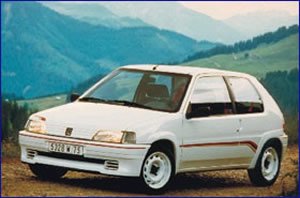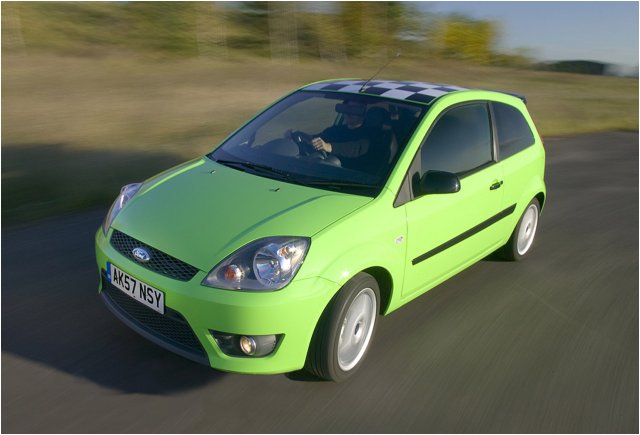


This edition of the Volvo P 1800S is the 4 speed / Manual version and was first brought out in 1967. This was at around the same time as the introduction of the 1968 Dodge Dart Hemi 7.0 V8 and the 1968 Plymouth Road Runner 426 Hemi V8 1st Gen.This particular Volvo P has a 1780cc Naturally Aspirated Petrol powerplant with 4 cylinders in a St formation.
The P shares its Petrol St4 engine configuration with the likes of the 2019 Ariel Atom 4 2.0 Turbo and the 2013 Caterham 7 620 R 2.0 L Supercharged. If you're looking for other fast cars which share the P's Rear Wheel Drive, Coupe combination then how about the 1982 Fiat X1/9 1.5 8V or the 1965 Aston-Martin DB6 1965.
Weighing in at 1119 kgs (2466 lbs) this makes the Volvo P 1800S in the same weight category as the 2020 Lotus Exige Sport 410 Roadster 3.5 V6 or the give or take 50kg.
In terms of power the 1780cc 16V St4 engine produces 108 bhp (80 kW) @ 5800 rpm similar to the 2017 Ford Fiesta 1.5 TDCi ST-Line 120 (118 bhp) or the 2013 Skoda Rapid 1.4 tsi Spaceback (120 bhp).
The Naturally Aspirated St4 throws out 110 lb-ft (149.1 Nm) @ 4000 rpm placing it with cars of similar torque performance figures such as the 2012 Mini Cooper Paceman (118 lb-ft) or the 2012 Lexus CT 200h 1.8L (105 lb-ft).
If one combines the weight with power or torque performance for the Volvo P you can get a better idea of it's real world performance.
The 2020 Alfa-Romeo Giulia 2.2 16v Turbo Diesel (121.4 bhp per ton) has similar Bhp Per Ton stats as the Volvo P.
The Volvo P has a Power to weight ratio of 96.5 bhp per ton and 98.3 lb-ft per ton. Bhp Per Ton figures of the 1967 P competing with the 2020 Alfa-Romeo Giulia 2.2 16v Turbo Diesel (121.4 bhp per ton) or the 2017 Volkswagen-VW Golf GTD Variant 2.0 TDi DSG (121.3 bhp per ton).
If you agree with the late great Carroll Shelby then arguably an even better indicator of potential performance, Torque. Use weight as well and you end up with - Torque per ton, with the Volvo P generating around 98.3 lb-ft per ton. If you're curious as to what other cars have as much torque to weight then look no further than the 1997 Ford Mondeo ST24 (123.1 lb-ft per ton) or the 2005 Ford Fiesta ST (123.1 lb-ft per ton).
With a 0-60mph time of 13.90 secs or a 0-100km/h (0-62mph) of 14.4 secs, this made the Volvo P 1800S as fast as the 1955 Jaguar Mark VII M 3.4L (14.10 secs) the 1976 Ford Cortina Mk4 1600 GL (14.30 secs) the 1967 Vauxhall-Opel Viva Brabham 1.2 8v (14.40 secs) the or the 1951 Mercedes 300 S Roadster (14.50 secs). This Volvo P 1800S is also faster than the 1955 Jaguar Mark VII M 3.4L (14.10 secs) the 1976 Ford Cortina Mk4 1600 GL (14.30 secs) the 1967 Vauxhall-Opel Viva Brabham 1.2 8v (14.40 secs) the and the 1951 Mercedes 300 S Roadster (14.50 secs).
When talking about the performance of the Volvo P on the drag strip it can reach a quarter mile in an estimated 17.91 secs @ 76.4 mph. Similar performance down the quarter mile can be found with the the 2020 Ford Puma ST 1.5 Turbo (17.83 secs), the 2014 Audi A1 1.8 TFSI S-TRONIC (17.84 secs), and the 1991 Ford Escort RS 2000 4x4 MK5 (17.85 secs).
Modern performance cars are often artificially restricted to 155mph. The 1967 version of the Volvo P 1800S has a maximum speed of 109mph.
If maxing out your car on the AutoBahn is your thing and you're wondering what's faster than the 1967 Volvo P 1800S then how about the 2009 KIA Borrego 4.6 V8 AWD (120 mph), the 2008 Ford Fiesta 1.6 Zetec S (120 mph), or the 2006 Pontiac Solstice Coupe 2.4 16V (120 mph).










Porsche 928 GTS 5.4L V8
Engine: Naturally Aspirated Petrol | 5397cc 32v V8
Top Speed: 168 mph
0-60mph: 5.40 seconds

Buick Riviera 6.6l V8
Engine: Naturally Aspirated Petrol | 6555cc 16v V8
Top Speed: 205.9 kph
0-100kph: 7.4 seconds



















